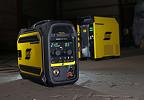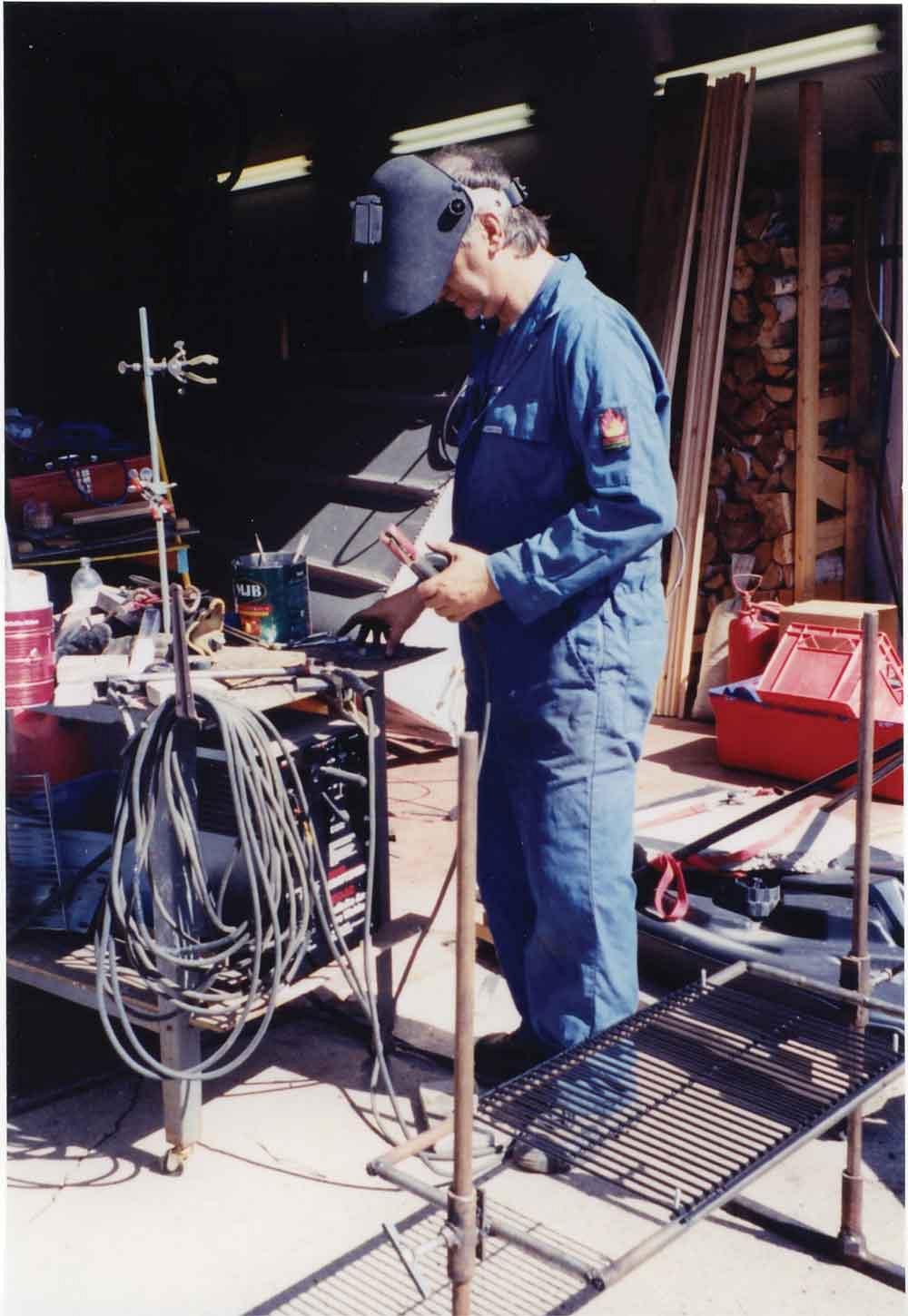- FMA
- The Fabricator
- FABTECH
- Canadian Metalworking
Business of Welding: Slag as a profit centre
- By Orest Protch
- November 1, 2016
Welding shops and fabricators are always on the prowl to increase profits and cut waste to maximize profits. Or at least they should be.
Many shops are good at tracking various weld fabrication costs such as gas, rod and wire, electricity, metal, and maybe even toilet paper. And fabrication shops might even have a cost centre for extra courses and training for employees.
A welder/fabricator can find countless courses on rod selection; the nuances of working with a variety of alloys including the exotic ones; and even tips for improving all-position welding in Arc, gas metal arc welding (GMAW), and gas tungsten arc welding (GTAW). But I have yet to see a single course on the costs associated with welding slag produced while working on a fabrication. Slag has both a negative and a positive influence on a fabrication shop’s bottom line, and the impact is huge.
Slag is found not only in welding, but also in metal foundries. In the foundry, industry slag is always a detriment to the quality of the finished product. It has to be removed before a melt furnace transfers the molten metal to the ladles for transfer to the actual foundry mould-making areas.
Most welders do not spend much time thinking about the coatings found on welding rods. For many welders, it is something that simply needs to be chipped off and is a nuisance that always seems to find its way onto any exposed skin not protected by coveralls or leathers.
It is also a main source of irritation should a weld fail inspection because of slag inclusions in the weld resulting from bad technique, wet coated electrodes, or the wrong amperage/voltage and feed speed.
But in coated rod welding, slag is an important factor in making topnotch-quality welds and minimizing rework costs.
The science and engineering that go into coated rods and this slag-making material are huge. Companies that manufacture the rod protect their trade secrets. To produce a rod that has a perfectly round coating with exacting properties is no easy feat. Long gone are the days of bare wire welding that some of us grew up with.
By understanding why a slag must have certain properties as it cools and forms, a welder will be in a better position to appreciate why the rod coatings must be protected from being chipped or damp while in storage and be chosen correctly for the metal he is to fuse. Each rod type has a specific coating that has been designed to impart good metallurgical properties to the weld bead that the formed slag protects.
A welder should have some knowledge of the science of slag formation to do his or her job well and profitably, which means achieving the lowest weld failure rate possible. Metal may be cheap, but welding rod and electricity are not. Neither is the cost of redoing fabrications that have failed weld inspection.
What Is Slag?
So what exactly is slag? What is its purpose, and why is it needed? What goes on at the weld liquid puddle and liquid slag interface is called the slag-metal reaction. The functions, structure, and properties of the slag will affect how well a weld bead turns out and its final strength and metallurgical properties. Slag will determine if you make a profit on a fabrication.
Slag is designed to come off the weld in a variety of different ways. With some rods and alloys, it peels off very easily; with others, it may crumble off. Sometimes it takes some serious hammer work to break it free. But each slag type has one factor in common: it must come off as per the engineering and chemical design to ensure a perfect weld.
Besides having the uncanny ability to find the smallest area of semiexposed skin when chipped off, the slag should have certain engineered characteristics to help a welder achieve a perfect weld, and these properties come from the coating. A knowledge of these properties will make all welders better at their jobs and increase profits.
Slag Properties
The following are some desirable functions and properties of slag:
- Regulate the depth of penetration.
- Improve the X-ray quality of the weld.
- Have a lower specific gravity than the molten metal so it will float on top.
- Have good electrical conductivity to help maintain the arc.
- Help shape the weld bead and keep the weld puddle from dripping during overhead welding.
- Protect the liquid metal from gases in the atmosphere.
- Scavenge the weld pool of impurities.
- Reduce spatter around the weld zone.
- Absorb unwanted liquid or solid inorganic or organic material such as surface oil and grease that may have been insufficiently cleaned off.
- Absorb any contaminating matter. To do this it needs to have the correct composition to readily react with any free molecular or atomic gases in the vicinity of the weld puddle.
- Have a lower melting point than the base metal and the rod itself.
- Have good surface contact with the weld puddle. If it does not, the atmosphere will get to it.
- Improve weld appearance.
- Insulate the molten weld metal by having high crystallizing ability upon cooling. This means it solidifies extremely quickly without any breaks.
- Not be miscible in the weld puddle. It needs to separate from the molten pool just like oil and water do.
- Provide for better striking ability when the arc is formed.
- Add alloying elements to the weld metal if necessary.
- Have a high measure of fluidity when the rod melts to allow it to cover the molten metal. It acts just like a flux in brazing or soldering, except the weld pool is below it.
Protect the Weld Pool From Gases
Porosity forms because as the liquid metal solidifies, there is less solubility of the gases and they cannot diffuse or disperse into the air above the hardening weld puddle fast enough to prevent the formation of bubble-like cavities.
Gases that are allowed to be in contact with the weld puddle during solidification create porosity and an unwanted reduction in metallurgical properties. These gases come in two types: those that are in atomic form, such as oxygen, nitrogen, and hydrogen; and those that are in molecular form, such CO2, H2O, CO, and SO2.
The atomic types of gases, such as dissolved oxygen, can react with the constituents of the melt such as carbon and sulphur. These can form unwanted inclusions in the weld metal that will affect its quality.
Because of the much larger size of molecular gases such as CO2 and H2O compared to paired atoms such as N2 and H2, they usually form larger areas of porosity. Substituting inert gases such as helium or argon displaces moisture and prevents it from reacting, which is done in GTAW and GMAW. Coated rods produce their own gas.
Causes and Consequences of Bad Slag Formation
So what happens if the slag you make while welding is just plain bad? The big issue is that you lose money doing rework of fabrications if they fail inspection or, worse still, they fail once your customer puts the fabrication you made into service.
Following are some of the causes and consequences of bad slag formation and control.
Any residual hydrogen in solid metal will result in the formation of hairline cracks caused by internal pressure created by the H2 gases as they try to diffuse through the metal lattice (just like tree roots pushing through a sidewalk).
Blowholes can be created if the weld pool solidifies while excess gaseous material is present.
In overhead welding, the weld pool solidifies first at the narrow part of the V. Since this is at the uppermost part of the bead and the weld pool tends to drip if it is kept molten too long, the welder tends to increase his speed. This results in slag inclusions.
Incorrect beveling of plate can cause slag inclusions. This is caused by bevels that are too steep and plates that are too close together. The molten pool tends to form a bridge and covers the root zone where slag or gases can collect.
Porosity is formed when gaseous material does not have enough time to get to the surface before the weld puddle solidifies.
Slag adherence is reduced in smaller weld beads because they cool faster. Slag is removed easier from flat or convex weld beads than it is from concave or undercut beads.
Slag inclusions are often created because of the welder’s poor technique. The weld pool must be kept molten just long enough to float out all the contaminating material.
Slag inclusions can be created if the slag flows ahead of the arc or if the welding is done downhill. In both cases, the molten pool can flow over the slag, entrapping it.
Voltage that is too high can force the slag deep into the weld puddle, causing it to get trapped when the rest of the bead and top slag solidifies.
Slag formation encompasses the fields of physics, thermodynamics, atomic chemistry, electricity, and quantum mechanics. So the next time you are using the chipping hammer to remove the slag, just think about all the sciences that went into the forming of it. It’s there for very important reasons.
Orest Protch facilitates seminars in basic welding and machining metallurgy for apprentice and journeymen welders, machinists, fabricators and engineers across Canada. He can be reached at oprotch@hotmail.com. Photos by Orest Protch.
subscribe now


Keep up to date with the latest news, events, and technology for all things metal from our pair of monthly magazines written specifically for Canadian manufacturers!
Start Your Free SubscriptionAbout the Author
- Trending Articles
CWB Group launches full-cycle assessment and training program

Achieving success with mechanized plasma cutting

3D laser tube cutting system available in 3, 4, or 5 kW

Brushless copper tubing cutter adjusts to ODs up to 2-1/8 in.

Welding system features four advanced MIG/MAG WeldModes

- Industry Events
MME Winnipeg
- April 30, 2024
- Winnipeg, ON Canada
CTMA Economic Uncertainty: Helping You Navigate Windsor Seminar
- April 30, 2024
- Windsor, ON Canada
CTMA Economic Uncertainty: Helping You Navigate Kitchener Seminar
- May 2, 2024
- Kitchener, ON Canada
Automate 2024
- May 6 - 9, 2024
- Chicago, IL
ANCA Open House
- May 7 - 8, 2024
- Wixom, MI
















